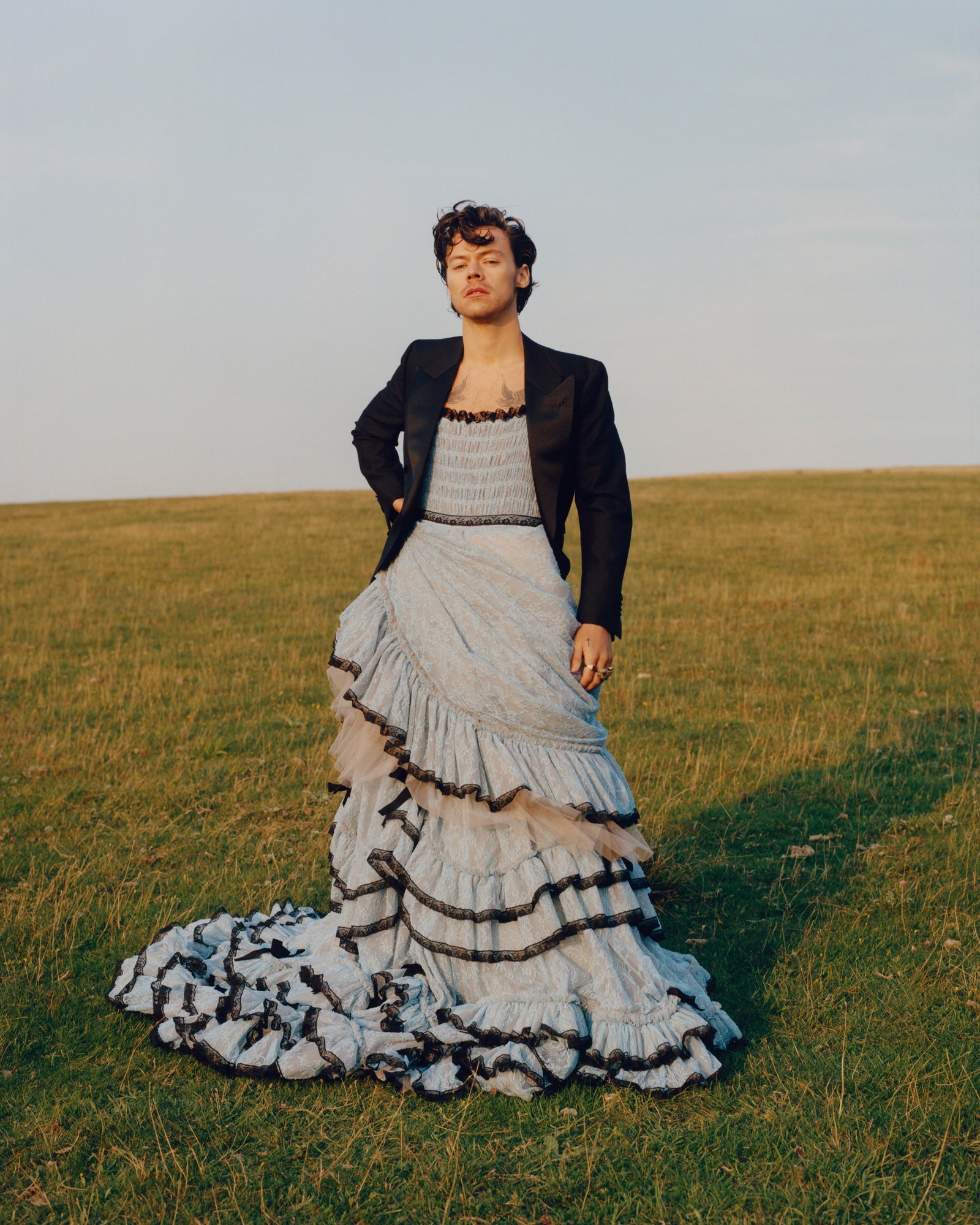

British singer-songwriter and actor Harry Styles made history as the first man to appear solo on the cover of Vogue magazine in the December 2020 issue — sporting a stylish Gucci-designed, lace-trimmed periwinkle gown paired with a black tuxedo jacket.
“There is no society that can survive without strong men,” said conservative commentator Candace Owens in a tweet responding to his revolutionary Vogue cover. “The East knows this. In the west, the steady feminization of our men at the same time that Marxism is being taught to our children is not a coincidence. It is an outright attack. Bring back manly men.”
Owens believes in rigid walls that segregate masculinity and femininity. She does not accept the blurring of the two worlds, placing her behind the evolving culture of acceptance in society.
Men cross-dressing in the music industry began trending in the 1970s with prominent artists like Iggy Pop, David Bowie and Prince. In fact, all over the world, men in history, including medieval kings, have worn forms of dresses, yet, they weren’t impeded in their “manly” participation in wars and ruling of entire kingdoms. So why should men in any industry wearing more feminine clothing initiate the need to “bring back manly men”?
Today, men in the music industry are breaking barriers and testing what masculinity means by wearing dresses, applying makeup and expressing themselves through their appearance, but these ideologies are far from universally accepted.
Owens’ tweet raises her own hypocrisy too; despite identifying as a woman, Owens often wears suits, which were once considered clothes only for men, blurring the gender lines she fights so hard to maintain.
Unfortunately, there are more people who consider Styles’ epicene fashion choices an attack on masculinity. Under Vogue’s original tweet with the cover, there are several others who responded about Styles “humiliating himself” with his “disgusting” fashion sense. All this is over a piece of fabric.
In decades past, the outward display of flamboyance from today’s K-pop stars would be considered so offensive that audiences would boo at any performance that fused gender norms. Fast forward almost three decades and South Korea is now an epicenter of beauty trends. It isn’t unusual today to see male K-pop stars with rosy lips and smoky eyes.
Male K-pop performers’ makeup embodies their art. Boy bands like BTS, EXO and GOT7 incorporate makeup as a part of their visuals. Like Styles, K-pop stars shouldn’t be criticized for being themselves or have to justify their fashion choices.
If today’s society can accept women voting or wearing suits then we should be able to accept men wearing dresses too.
Gender refers to socially constructed views of men and women that have long stereotyped people in detrimental ways. Because it’s a social construct, it’s bound to vary as society evolves. Regulations that tell people how to act and look promote closed minds and stereotypes. The more we understand this the closer we get to accepting gender as a flexible idea rather than a rigid rule.
The music industry is centered around how performers present themselves, whether it be through their music or their aesthetics. Music itself has no gender, and in the end, how the music makes the audience feel is what should really count.
We should not only accept the changes that are happening everywhere in the world, but also redefine gender entirely — including masculinity, femininity and everything in between.
Freedom in art is crucial. Artists inspire change and growth through their work and actions. When suppressed from rightfully acting against today’s rigid gender norms, the reach of their messages is limited, preventing society from progressing to its full potential. Normalizing blurred gender lines will create room for fair treatment of all genders, and allow people to feel confident about themselves. Blurred lines and open minds will help remove orthodox thoughts and beliefs related to gender, allowing more opportunities for everyone and helping us progress not only as a country, but as human beings.





